It’s early in the year, and the perfect time to start learning to forage as the season kicks off. You may be inspired and excited, but also wondering where to start.
Start with One
Overwhelm is the enemy. We recommend starting with a wild plant that is super distinctive, abundant and versatile; Stinging Nettle and Dandelion are good examples that you can spot pretty much all year round, even if it’s best to harvest the leaves in the Spring. Become a total expert in that one plant; distinguish it from lookalikes, learn where it grows, what it looks like when it grows in the shade and in direct sunlight, what parts are used for what purposes, and importantly try as many recipes using your new plant acquaintance as you can. Don’t forget the non-food uses – did you know you could never need to buy laundry detergent again? Look up using horse-chestnut shells as detergent. Foraging is the whole process of gathering a plant to processing it for immediate enjoyment or preserving it for later in the year, and you will get to know the plant and its characteristics much better if you experiment and expose it to all your senses. You will gain confidence and start to come up with your own ideas, which is where the fun really begins!
Make it an Easy Habit
An important, but often overlooked, part of making a lasting habit or behaviour shift like starting to forage is to make it part of your identity. One way to do this is to just be the kind of person that has a bag and a knife tucked in your coat pocket, your rucksack, your car glove compartment, and a spare in your hat band, so that you’re always ready. Someone I know has a small tupperware box with her everywhere she goes and never misses a wild garnish on her meals. You do not need any kit at all outside what is readily available in your kitchen to become a highly successful forager, you just need keen eyes and an extra 10 minutes added to any journey time so you can stop for that amazing patch of the latest green muse.
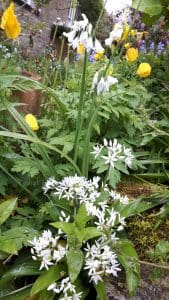
Keep a Record
If you have a foraging guide, consider marking pages of plants you have found with a sticker or symbol so that you have a working knowledge inventory. Perhaps write your own ID guides tailored to your learning style and senses or start a wild food recipe book or blog that tracks your experiments. Some of the best foraging books to start with are guides to plants through the year, like A Forager’s Calendar by John Wright, and The Edible City (also suitable for rural areas) by John Rensten. If you can see your monthly and yearly progress, your confidence will continue to build along with your love and fascination with being outdoors in the realms of these delicious and abundant food plants.
It’s also a great idea to start a personal map or list of foraging spots from where you can gather legally and safely. You think you’ll remember because this spot was so amazing, but once it’s Wild arlic season again, are you sure you’ll remember exactly which layby had that incredible little glen of garlic?
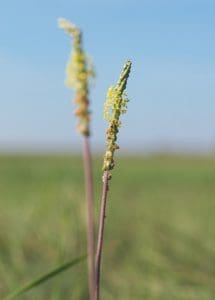
Use All Your Senses
The weird range of smells that wild plants offer is often of surprise to folks that come on foraging courses. Smell is of course a very potent sense, hooking directly into your brain’s memory circuitry. Smell every plant you come across, and every part of every plant. Some parts have oddly different aromas, like Cloveroot, which has very bland and unassuming aerial parts, but a root that smells like clove! Some plants have hairs, some spikes, some mushrooms are slimy, some rough – get to know the various textures of what you forage. And importantly, visit them often so that all these sensory tidbits are refreshed. Use the materials available from what you forage; if you’re learning to identify Birch because you’d like to experiment with the sap, then find a fallen branch and take some wood home to carve into a spoon. You’ll build a repository of senses, experiences and stories that will come to equal your foraging expertise, which will be robust and unique to you.
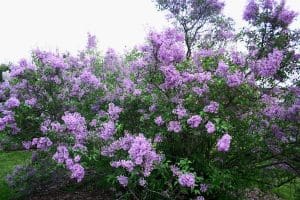
Share the Experience
Whether you invite a friend to share their first cup of foraged nettle tea or invite a group over for a three course foraged feast, share what you’re up to and what you’re learning with friends, family and your social media circle. People who have never been exposed to the possibilities of wild food may become a fascinated foraging buddy, and you can mutually inspire each other. Keep your inspiration levels high by keeping up with what other people are learning and doing, meet up for walks or shared cooks. It is far more fun to process a few kilos of elderberries with a few friends than by yourself, and it’s way faster!
Another avenue for honing your ID skills specifically is to join a plant or mushroom foray with one of the local groups – check out the British Botanical Society and British Mycological (mushroom) Society to see lists of their regional groups and ways to get involved. These tend to be groups of very friendly, committed people that go out frequently to sites you may not have access to as a member of the public, and you are guaranteed to learn loads.
And, of course, joining a foraging course like the ones Totally Wild UK offer is one of the best ways to gain some confidence and hands on experience by having a day out with a professional. You’ll definitely go away with more ideas and new eyes to see all the edible delights all around! heck what courses are coming up near you HERE.
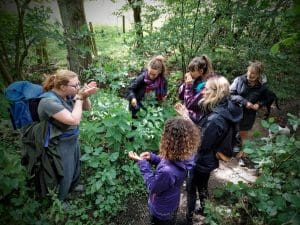
The key takeaways are:
- Start with one: pick a plant and get to know it, and all the ways it can be eaten, really, really well.
- Make it an easy habit: you don’t need loads of kit, or even time! Keep a carrier bag and kitchen scissors or pen knife in the pocket of your coat so it’s easy to pick up some goodies on your dog walk or run.
- Keep a record: whether it’s coloured dots in a field guide or your own forager’s notebook, give yourself a metric of progress so you can marvel at what you’ve learned in six month’s time.
- Use all your senses: your brain is amazing at recognising patterns, especially those in nature. By touching, tasting, smelling and using the plant material, you maximise the ways you know about each plant.
- Share the experience: share your experiments and experiences with those around you, and look into joining local ID groups to make the process a social one. That way it will become an integrated, enjoyable part of your life.



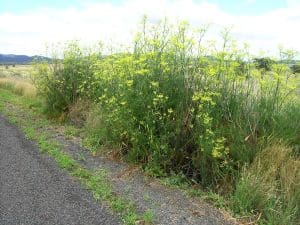



Leave a Reply
You must be logged in to post a comment.